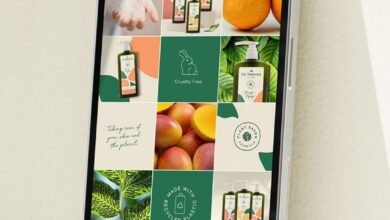10 Innovative Zero-Waste Swaps for a Cleaner Planet

Introduction:
In an era where environmental consciousness is more critical than ever, making simple swaps in our daily lives can have a profound impact on the planet. zero-waste living has emerged as a powerful way to minimize our ecological footprint. This lifestyle encourages reducing, reusing, and rethinking waste in every aspect of daily life. While the idea might seem daunting at first, adopting innovative zero-waste swaps can make the journey not only achievable but also enjoyable.
From ditching single-use plastics to embracing creative upcycling and composting methods, there are countless ways to transform everyday habits into eco-friendly practices. These swaps not only help to reduce waste but also promote resourcefulness, save money, and inspire others to follow suit. In this post, we’ll explore innovative zero-waste ideas that you can incorporate into your home and routine, showing how small changes can lead to a significant impact on our planet’s health.

1. Ditch Disposable Coffee Cups: Opt for Reusable Mugs
Every year, over 16 billion disposable coffee cups are used globally, contributing to a staggering amount of waste. These cups are typically lined with plastic, making them non-recyclable and destined for landfills. A reusable coffee mug offers an environmentally responsible and practical solution. Stainless steel, bamboo, or glass mugs are excellent choices, combining functionality with aesthetics. By embracing this swap, you’ll not only cut down on waste but also enjoy beverages that stay hotter (or colder) longer. Coffee shops worldwide now offer incentives, such as discounts, for customers who bring their mugs, promoting a win-win situation for both consumers and the planet.
Reusable mugs also offer a variety of styles and features, from spill-proof lids to insulated designs, making them ideal for busy lifestyles. If you’re prone to forgetting your mug, keep an extra one in your car or at work to ensure you’re always prepared. This seemingly small change can have a monumental impact when adopted collectively, helping reduce the demand for single-use cups and their environmental toll.
2. Replace Plastic Grocery Bags with Fabric Totes
The world consumes approximately 5 trillion plastic bags annually, many of which end up polluting oceans and harming marine life. By swapping plastic bags for reusable fabric totes, you take a proactive step toward reducing this damage. Fabric totes are versatile, durable, and often made from eco-friendly materials like organic cotton, recycled polyester, or jute. Unlike flimsy plastic bags, fabric totes can carry heavier loads, making them perfect for shopping trips, beach outings, or even as everyday carry bags.
Make this swap more effective by investing in multiple fabric totes and keeping them handy. Foldable versions fit easily into a purse or pocket, ensuring you’ll never need to rely on single-use bags again. For added sustainability, choose bags made from upcycled materials or those produced by ethical brands. Over time, this simple change can significantly reduce your household’s contribution to plastic waste, fostering a cleaner environment for future generations.
3. Swap Plastic Wrap for Silicone Lids or Beeswax Wraps
Plastic wrap, a household staple, is notoriously difficult to recycle and often ends up in landfills or oceans, where it takes hundreds of years to decompose. Silicone lids and beeswax wraps provide eco-friendly, reusable alternatives. Silicone lids are stretchy, heat-resistant, and can cover bowls or plates of various sizes. Beeswax wraps, made from natural ingredients like beeswax, cotton fabric, and tree resin, are perfect for wrapping sandwiches, fruits, or leftover food.
These sustainable swaps not only reduce plastic waste but also enhance food preservation. The breathable nature of beeswax wraps keeps produce fresher for longer, while silicone lids create airtight seals that prevent spills and extend the life of leftovers. Cleaning these items is easy: rinse them with mild soap and water, and they’re ready for reuse. Over time, these alternatives prove to be cost-effective while promoting a zero-waste kitchen.
4. Use Refillable Bottles Instead of Single-Use Plastic Ones
Single-use plastic bottles are a leading cause of pollution, with over 1 million bottles purchased every minute worldwide. Switching to a reusable water bottle significantly reduces plastic waste and promotes healthier hydration habits. High-quality bottles made from stainless steel, glass, or BPA-free plastic are durable, stylish, and designed to keep drinks cold or hot for extended periods.
Incorporating this swap into your lifestyle is simple. Carry a refillable bottle wherever you go, and take advantage of refill stations now available in many public spaces. Some bottles even come with built-in filtration systems, ensuring clean water access anywhere. By adopting this change, you’re not only reducing plastic waste but also saving money spent on bottled water.
5. Switch to Bar Soap and Shampoo Bars
Liquid personal care products, often packaged in plastic, contribute significantly to household waste. Bar soaps and shampoo bars offer a sustainable alternative, typically packaged in recyclable or compostable materials. These bars last longer than their liquid counterparts, saving you money while reducing your environmental footprint.
Modern bar products cater to diverse needs, offering formulations for sensitive skin, oily hair, or even specific fragrances. Look for brands using natural, cruelty-free ingredients for an added eco-friendly touch. Proper storage, such as keeping the bars dry between uses, ensures their longevity and effectiveness. This swap is a simple yet impactful way to embrace a more sustainable personal care routine.
6. Opt for Cloth Napkins and Towels Over Paper Products
Paper napkins and towels contribute to deforestation and generate substantial waste. Cloth alternatives, made from organic cotton, bamboo, or linen, are washable, reusable, and often more absorbent. Over time, using cloth products reduces waste and saves money spent on disposable paper goods.
Cloth napkins add a touch of elegance to meals, while cloth towels handle cleaning tasks effectively. Many eco-conscious brands offer colorful, patterned options that brighten up your kitchen while supporting sustainable practices. By making this swap, you’ll significantly reduce the waste produced by single-use paper products in your home.
7. Replace Disposable Razors with Safety Razors
The average person discards dozens of disposable razors annually, contributing to landfill waste. Safety razors, typically made from stainless steel, offer a sustainable and cost-effective alternative. These razors use replaceable blades, drastically reducing waste and providing a closer, smoother shave.
Safety razors require a slight adjustment in technique, but once mastered, they become a superior grooming tool. Proper maintenance, such as drying the razor after use, ensures its longevity. This swap not only minimizes waste but also elevates your shaving experience.
8. Compost Food Scraps Instead of Tossing Them
Food waste accounts for a significant portion of landfill material, releasing harmful methane gas during decomposition. Composting turns organic waste into nutrient-rich soil, benefiting gardens and reducing greenhouse gas emissions. Various composting systems, from countertop bins to backyard setups, cater to different living situations.
Start by collecting fruit peels, vegetable scraps, coffee grounds, and eggshells in a designated container. Over time, these materials break down into compost, which can be used to enrich soil for plants. This swap closes the loop on food waste, turning trash into treasure.
9. Trade Plastic Toothbrushes for Bamboo Versions
Traditional toothbrushes, made from non-recyclable plastic, often end up in oceans or landfills. Bamboo toothbrushes offer a biodegradable alternative while maintaining the same cleaning efficiency. Once the bristles are removed, the bamboo handle can be composted.
Bamboo toothbrushes come in various designs, catering to both adults and children. Some brands even offer subscription services, ensuring you always have an eco-friendly option on hand. This swap is a simple yet effective way to reduce waste and promote a greener dental care routine.
10. Use Rechargeable Batteries Instead of Disposable Ones
Disposable batteries, laden with chemicals like mercury and cadmium, pose environmental hazards when discarded. Rechargeable batteries, on the other hand, can be used hundreds of times, reducing waste and saving money. Paired with a good charger, these batteries power everything from remote controls to flashlights efficiently.
Investing in high-capacity rechargeable batteries ensures longevity and performance. This swap not only minimizes waste but also promotes sustainable energy consumption.

Conclusion
Embracing these sustainable swaps not only reduces waste but also helps pave the way for a cleaner, greener future. Each small step you take toward eliminating single-use items and adopting reusable, eco-friendly alternatives has a ripple effect, inspiring others to follow suit and collectively lessening the strain on our planet. These changes are not just environmentally impactful but also foster healthier, more mindful living within your home.
By prioritizing sustainability in your daily choices, you contribute to a brighter, more resilient world for generations to come. Let these swaps be a starting point for further exploration into a zero-waste lifestyle—because every effort, no matter how small, brings us closer to achieving meaningful, lasting change.






4 Comments